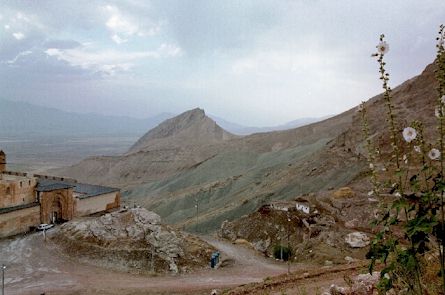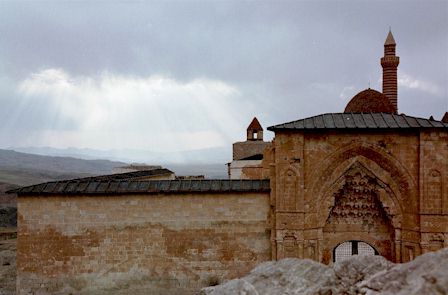|
|
|

|
The city of Dogubayazit is situated on a dusty plain,
1950
meters above sea level. It's boring and dominated by two
army camps. 12 big,
modern tanks are exhibited for the sake
of horror. The passing traffic is slowed
down by oil drums
filled with soil, but without fresh flowers. But the soldiers
smile and wave at passing tourists heading for the Ishakpasha
Sarayi. The palace
is situated on a mountain terrace about 5
kilometers to the east. The city, used
to be on the foot of the
palace, was moved in modern times. Now the ruins are
occupied
by poor kurds from the mountains. With a wiew to the golden
palace and
threatening clouds you can enjoy a beer or two in
the Parachute Café.
|

|

|

|
|
The construction was probably undertaken by Hasan Paşa,
who had been the Ottoman commander-in-chief of Georgia in the late 18th century.
It was completed by his son Ishak Paşa II, perhaps at the beginning of the
19th century. By the middle of that century it was abandoned. The palace was
actually a complex of many different buildings and perhaps 360 rooms and halls.
It was
|
self-contained, like a small village: There
were an audience chamber, barracks, medrese, arsenal, food depots, bakery, baths,
harem apartments and other living quarters, a mosque. Even a prison.
Architecturally, purists charitably describe it as eclectic, meaning it contains
a hodgepodge of elements mostly from Anatolia and the Caucasus.
|
|
|
|

